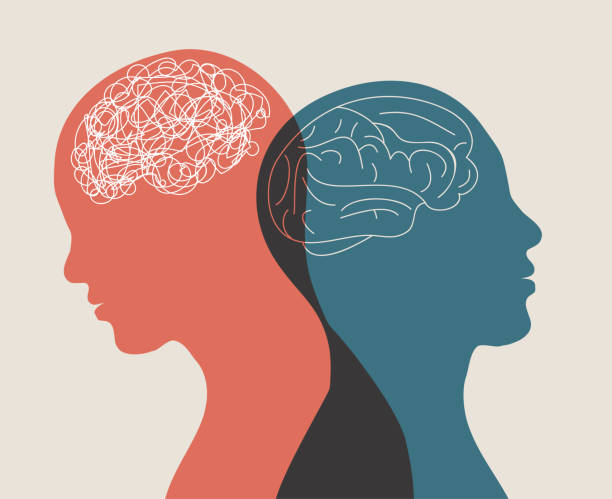Introduction to Dimensional Approach
Imagine going to a doctor with a physical symptom—say, fatigue—and instead of being told what’s causing it, you’re forced into a rigid box: “You either have anemia or you don’t.” But what if your fatigue is somewhere in between, or caused by a combination of factors? Wouldn’t a more nuanced diagnosis help you get better care?
This is precisely the challenge mental health professionals face. The traditional system for diagnosing mental disorders, the Diagnostic and Statistical Manual of Mental Disorders (DSM), categorizes conditions into strict labels. You either have depression or you don’t, you either have anxiety or you don’t.
But the messy reality of human experience rarely fits into neat boxes. Symptoms overlap, severities vary, and individuals often don’t fit a single category. Increasingly, experts argue for a dimensional approach to mental health, viewing symptoms and disorders on spectra rather than discrete categories.
Read More- Myths About Mental Health
The Limits of Categorical Diagnosis
The DSM has been the gold standard for decades, guiding clinicians worldwide. It lists criteria for dozens of disorders, requiring a specific number of symptoms to be “present” for a diagnosis.

While this approach has helped standardize diagnosis and research, it has major drawbacks:
- Artificial Boundaries: Mental health symptoms often exist on a continuum. Someone with four symptoms of depression doesn’t get a diagnosis, but their distress may be just as real as someone with five symptoms.
- High Comorbidity: Many people meet criteria for multiple disorders at once. For example, anxiety and depression often co-occur, challenging the idea of distinct categories.
- Heterogeneity Within Diagnoses: Two people diagnosed with the same disorder can have vastly different symptoms, making treatment tricky.
- Stigma and Labeling: Diagnostic labels can be stigmatizing and reduce complex human experience to a “disorder.”
Enter the Dimensional Approach
Rather than “yes/no” categories, dimensional approach view mental health as a spectrum or range of traits. Symptoms vary in intensity and frequency, and disorders emerge from combinations of these traits.

Research Domain Criteria (RDoC)
Developed by the National Institute of Mental Health (NIMH), RDoC focuses on underlying psychological and biological systems, such as emotion regulation, cognition, and social processes, rather than symptom checklists. It integrates genetics, neuroimaging, and behavioral science to understand mental health on multiple levels.
Hierarchical Taxonomy of Psychopathology (HiTOP)
HiTOP organizes symptoms into hierarchies, from broad dimensions like internalizing (e.g., anxiety, depression) and externalizing (e.g., substance use, antisocial behavior) to specific symptoms. It aims to capture overlapping features and common causes more accurately.

Why Dimensional Models Make Sense
1. Reflects Real-World Experience
Most people don’t neatly fit diagnostic boxes. Symptoms wax and wane, overlap, and shift. Dimensional models better mirror this fluidity.
2. Improves Treatment Personalization
Knowing where someone falls on various dimensions allows for targeted interventions rather than one-size-fits-all treatments.
3. Reduces Stigma
Dimensional views normalize variations in mental health, reducing “us vs. them” thinking.
4. Enables Early Detection
Identifying subclinical symptoms early can prevent full-blown disorders.
Challenges of Dimensional Models
- Clinical Implementation: Moving from categories to dimensions requires retraining clinicians and changing diagnostic tools.
- Insurance and Policy: Many health systems and insurers rely on categorical diagnoses for coverage decisions.
- Complexity: Dimensional data can be more complex to interpret and communicate.
Cultural Considerations
Mental health symptoms and their expressions vary across cultures. Dimensional models allow more flexibility in accounting for cultural differences, unlike rigid diagnostic labels.
Conclusion
The traditional “checklist” way of diagnosing mental health disorders has helped create a shared language but falls short of capturing the rich, complex reality of human psychological experience.
A dimensional approach offers a promising path forward—one that reflects the fluidity of symptoms, respects individual differences, and promotes better, stigma-free care.
References
Kotov, R., Krueger, R. F., Watson, D., Achenbach, T. M., Althoff, R. R., Bagby, R. M., … & Zimmerman, M. (2017). The Hierarchical Taxonomy of Psychopathology (HiTOP): A dimensional alternative to traditional nosologies. Journal of Abnormal Psychology, 126(4), 454. https://www.ncbi.nlm.nih.gov/pmc/articles/PMC5555643/
Cuthbert, B. N., & Insel, T. R. (2013). Toward the future of psychiatric diagnosis: the seven pillars of RDoC. BMC Medicine, 11(1), 126. https://bmcmedicine.biomedcentral.com/articles/10.1186/1741-7015-11-126
Widiger, T. A., & Samuel, D. B. (2005). Diagnostic categories or dimensions? A question for the Diagnostic and Statistical Manual of Mental Disorders—fifth edition. Journal of Abnormal Psychology, 114(4), 494. https://pubmed.ncbi.nlm.nih.gov/16351356/
Subscribe to PsychUniverse
Get the latest updates and insights.
Join 3,027 other subscribers!
Niwlikar, B. A. (2025, June 10). Dimensional Approach in Diagnosis and 4 Reasons Why It Is Important. PsychUniverse. https://psychuniverse.com/dimensional-approach-in-diagnosis/



